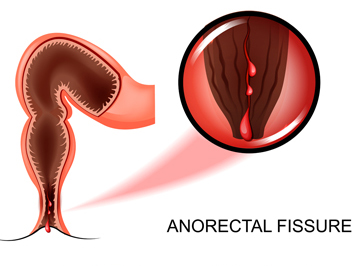Anorectal disease refers to illnesses of the anus and/or rectum. The most common ailments include hemorrhoids, anal fissures, anorectal abscesses, and anal fistulas.
Hemorrhoids: Hemorrhoids are large blood vessels similar to varicose veins located around the anus and lower rectum. Some common causes of hemorrhoids include aging, chronic constipation, and pregnancy. Symptoms include itching, inflammation, and pain. Read more about hemmerhoids.
Anal Fissures: Anal fissures are small tears in the lining of the anus. Some causes of anal fissures include hard, dry bowel movements, diarrhea, and inflammation in the anorectal area. Symptoms include pain, bleeding, and itching.
Anorectal Abscess: An anorectal abscess is a pus-filled infection around the area of the anus or rectum. Anal abscesses occur when bacteria or fecal matter enters the tissue outside the anus through infected anal glands. Symptoms include pain, anal skin irritation, pus drainage, fever, and swelling. Having an inflammatory bowel disease, such as Crohn’s disease or colitis, increases the chance of getting an anorectal abscess.
Anal Fistula: About 50 percent of the time, an anorectal abscess develops into a fistula, which is an abnormal tunnel that connects infected glands inside the anus to the opening of the skin around the anus. Symptoms include pain, anal skin irritation, pus drainage, fever, and swelling.


